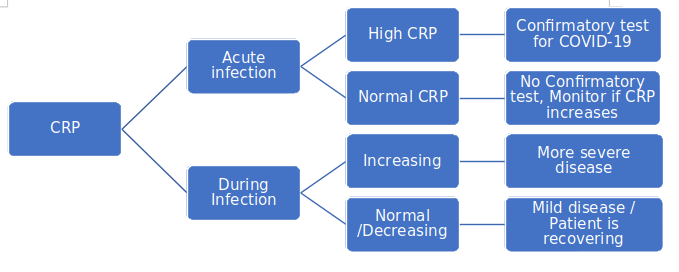What is CRP or C-Reactive Protein? What is the role of CRP in Covid-19 diagnostics? Why is the test done? Everything around this, that you should know, in this post and of course our doctors always there to help you. Just fill in your details in the form down below and we will answer all your questions for FREE!
What is CRP?
CRP or C-reactive protein is a compound produced by our liver in response to inflammation in the body. As per standards, CRP levels below 8 mg/dL of blood are normal.
C-reactive protein (CRP) is one of the key markers needed to diagnose and to evaluate the severity of infection, prognostics, and monitoring the course of COVID-19 disease.
Also Read: Deadly Coronavirus
CRP in COVID-19
CRP is especially used for early-phase screening. CRP higher concentrations during COVID 19 are often related to the severity of the disease.
In clinics/hospitals, every single patient that comes with fever and other suspected symptoms will be first checked with CRP and whole blood cell count. These routine tests will help to differentiate a common cold from COVID-19. C-reactive protein (CRP) is also monitored during the treatment together with other biochemical markers throughout the whole treatment and recovery process.

CRP levels increase significantly to appr. 30-50 mg/l during COVID-19 in contrary to the mild viral respiratory infections where CRP does not normally elevate.
High CRP along with increased white blood cell (WBC) count, elevated serum ALT and AST levels, LDH and, ferritin levels and decreased lymphocyte and platelet counts have been associated with greater disease severity and hospitalization in COVID-19 patients compared to those with the non-severe disease.
The elevated white blood cell and CRP levels in severe COVID-19 patients may reflect accompanying bacterial infection.
How CRP works?
CRP is a non-specific biomarker of inflammation, infection, and tissue injury. It supports the clinical picture.
CRP became detectable within Six to Eight hours of the initial stimulus.
Its levels peak at 48 hours – when symptom starts to appear.
Levels decrease when patient’s inflammatory stimulus ends, and the patient is healing.
CRP correlates well with the severity of the symptoms of respiratory infection patients with COVID-19 and therefore helps in the assessment of the patient´s condition together with other clinical findings.
Also Read: Homeopathy in case of Flu
For more information, you can visit ScienceDirect and NCBI.

 If you are unsatisfied with our treatment and do not want to continue the medicines you can ask for refund within 24 hours of making the payment.
If you are unsatisfied with our treatment and do not want to continue the medicines you can ask for refund within 24 hours of making the payment.